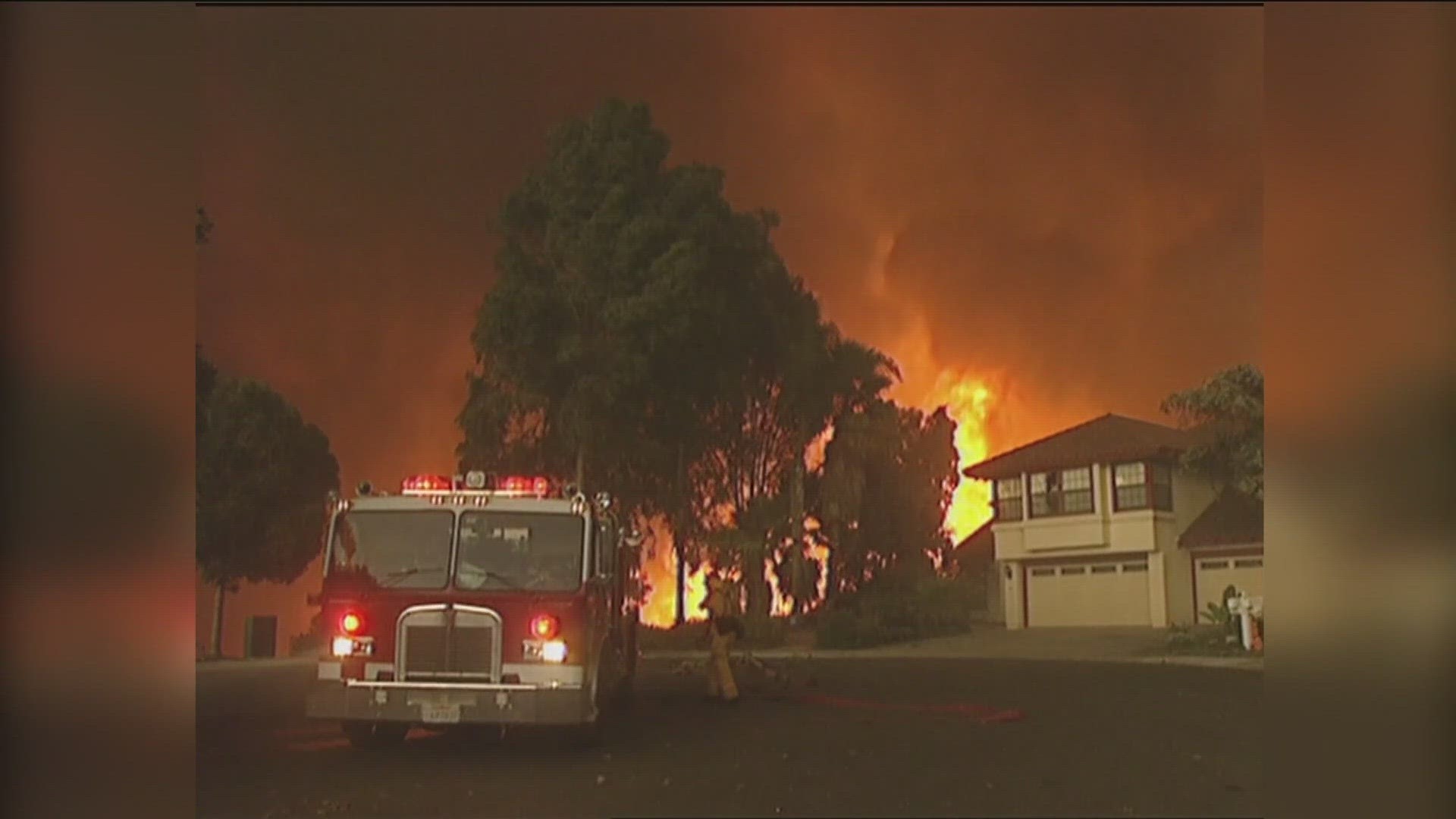SAN DIEGO — A wildfire can strike at any time, but when Santa Ana winds kick up, San Diego County becomes particularly vulnerable as we learned in 2003.
In this Zevely Zone, I revisit the Cedar Fire which burned 273,000 acres. The Cedar Fire was first reported at 5:37 pm on October 25th, 2003, and by the next morning, thousands of Scripps Ranch residents had been evacuated from their homes while something precious to me was heading to the fire's front lines.

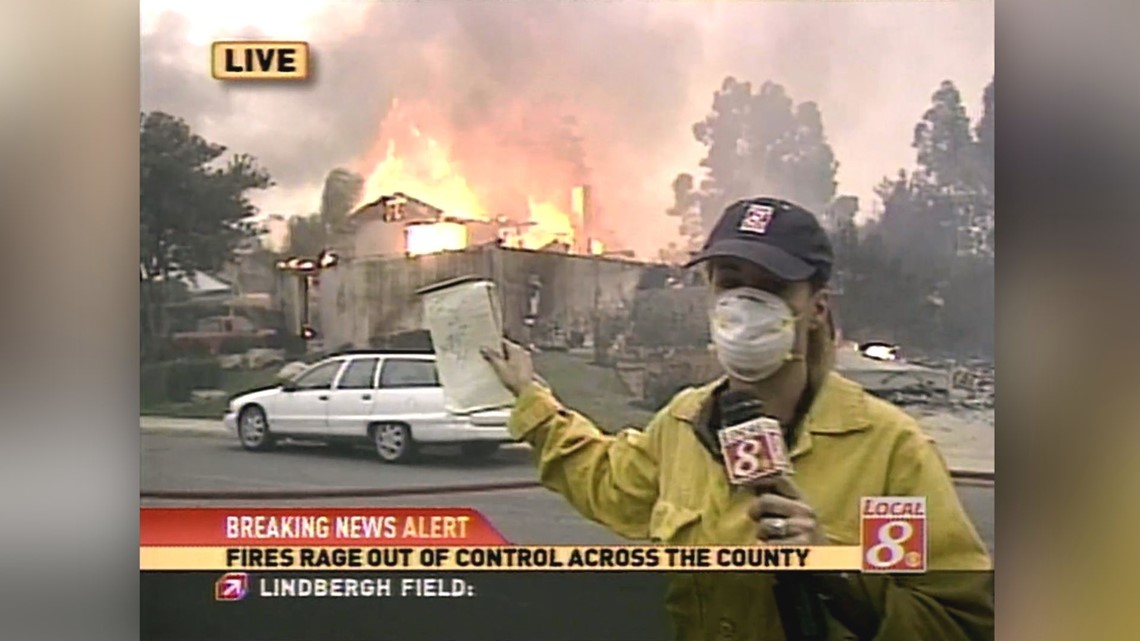
As we approach the Cedar Fire's 20th Anniversary, we are pulling archive footage of CBS 8's live coverage that day when my wife, Heather Lucas, reported live from Scripps Ranch for more than 10 hours.
"Barbara Lee and Dan as you can see it's a raging inferno right now. I am going to have Scott go off of me right now so you can see what is going on. We have got the garage fully engulfed, just a while ago it was just the top of the roof, but now it has spread down to the garage, we are hearing popping, windows breaking out, oh, you just saw a big boom there," said Heather during a live report in 2003.
I recently returned with Heather and photojournalist Scott Hall to Scripps Ranch to gather their memories from that devastating day.
"Fire on both sides of the road," said Heather. I showed her some of the archived live shots from that day. "The heat from this one is getting really intense, I think we are going to step back actually, Scott wants to step back," said Heather during a live report in 2003.

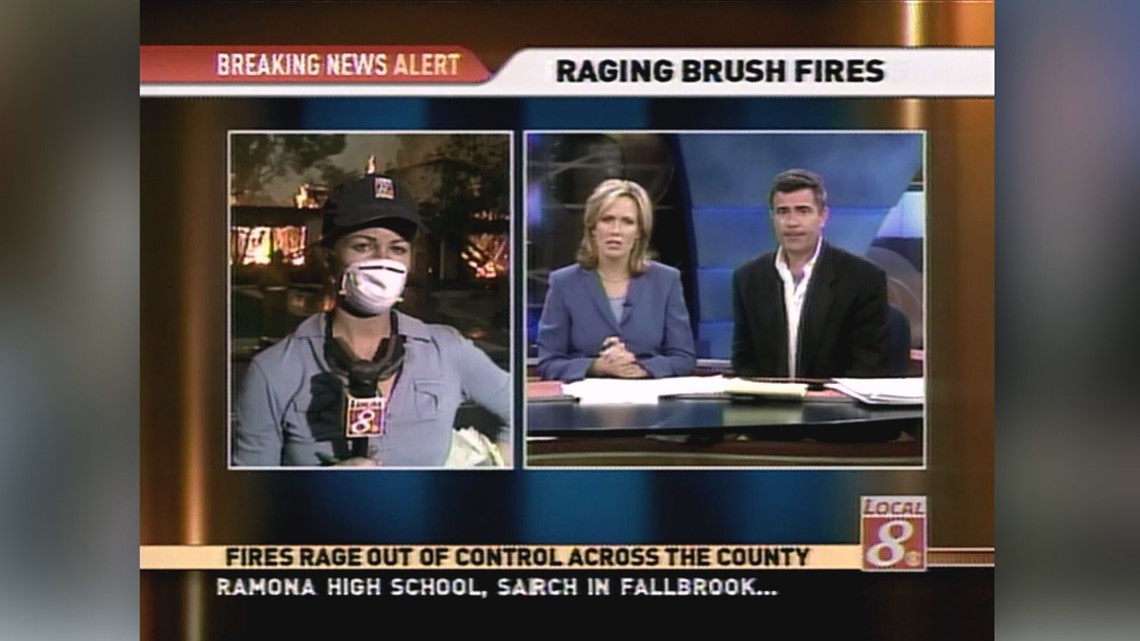
Heather and Scott were dangerously close to the flames and at one point had to run for safety. "That was scary. I think we took cover behind cars," said Scott.
"I remember thinking when these guys say run, you run," said Heather.
There were walls of fire that day coming over the hills from Ramona leaving the sky an eerie orange with smoke and ash so thick you could barely see the sun.
"It was daytime, but it felt like nighttime," said Heather. Thousands of residents in evacuation centers depended on our coverage that day which showed detailed maps of the where the fire was heading next.
"Our Heather Lucas joins us live with the situation. Heather are you in the same spot you were before? We sure are Barbara Lee. We are on Semillon Road, the 12-block of Semillon Road," said Heather during a live report in 2003.

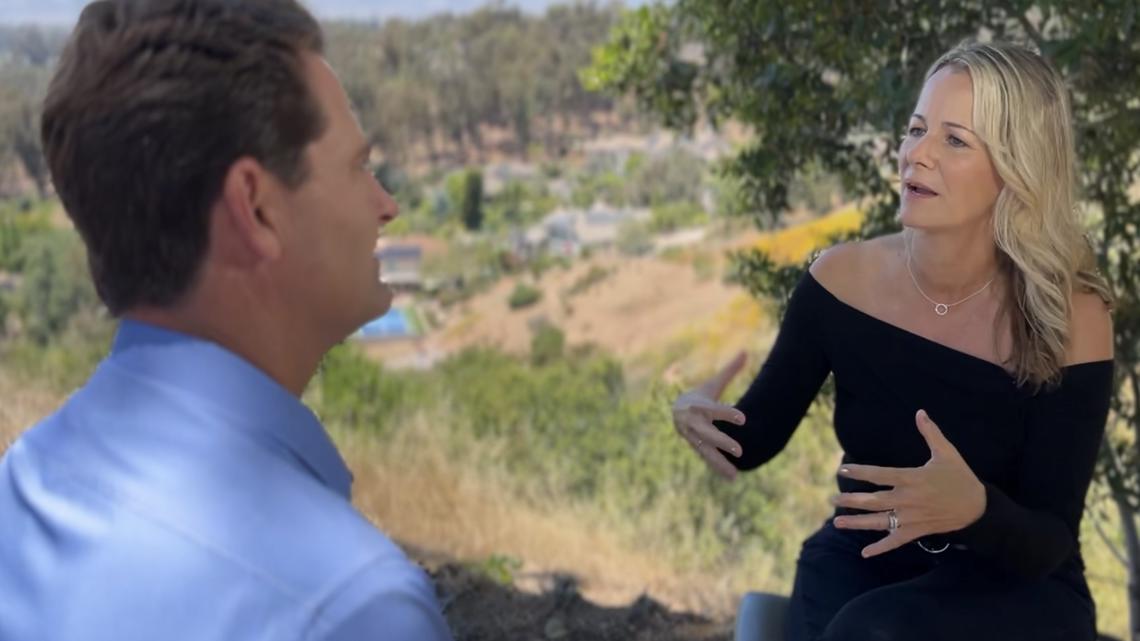
While Heather was in front of the camera reporting live, producer David Gotfredson walked the neighborhood writing down the addresses of confirmed homes that were on fire.
"There are some parts of this neighborhood that are only accessible by foot because there are hoses all over the place," said David. "I am going to give you a list of homes on Birch Bluff Avenue, that are destroyed, 10607, 10611, 10606, 10617, 10616, 10621."

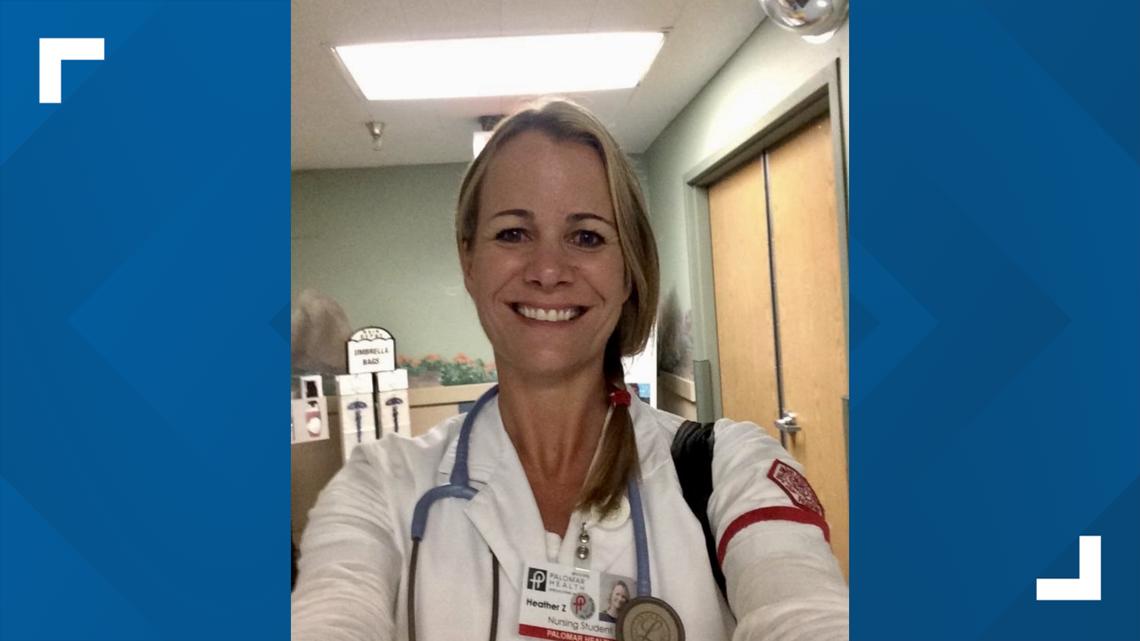
At that point in our TV careers, Heather and I had both covered a lot of wildfires, but this was the first fire that we could recall live coverage of where a reporter, producer, and photojournalist went street by street writing down specific addresses to homes that were on fire then broadcasted those addresses on live television.
"If you take a look down Fairbrook here, Fairbrook Place this is something you would see in a movie that is the only way to describe it, it is just complete devastation. We've got homes all the way down Fairbrook Place that have been lost and Scott Hall is just kind of giving you a live look at [how] he is going to make his way down the other side of the street," said Heather during a live report in 2003.

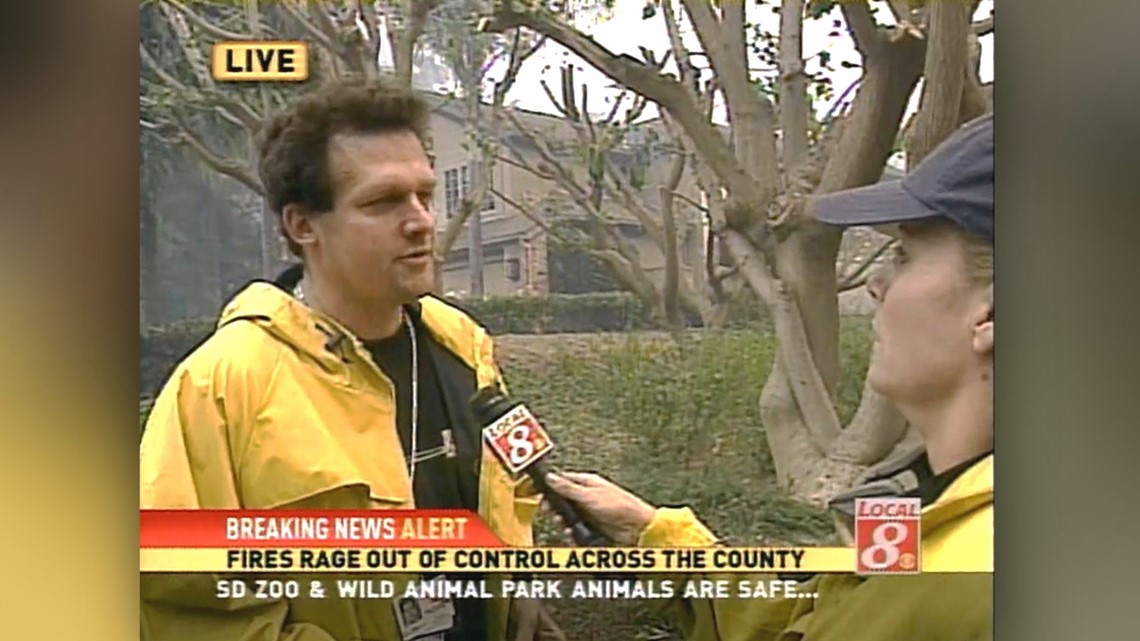
"Houses were on fire, streets were closed, everybody is evacuated but the police are letting people who need medication and that was Dan Wisner coming for medication for his wife," said Scott during our interview while recalling the live interview.
"Yeah, it's really scary to see all of your neighbors' houses burning down, very scary. You just have to rely on your family and friends at this point. The back patio was on fire but hopefully, with the firemen here they will be able to save it," said Wismer in 2003.
"Firefighters are doing all that they can to save as many homes as they can, but some of this is beyond their control right now," said Heather during a live report in 2003.
At the time, in 2003, the Cedar Fire grew to be the largest wildfire in California history burning 273-thousand acres and destroying nearly three thousand structures. Heather and I drove to work that day together.
She was sent to the frontlines of the fire; I was assigned the fire's impact on the roadways.
"Why don't we take a look at the I-15 again, we are telling people to stay away from it, but I can tell you right now you can't get on it in this area. California Highway Patrol emptying it out in the last 30 minutes," I reported in 2003. As that day developed it became clear that Heather and Scott were going to be the focus of our team coverage and as I listened to where they were I grew very concerned for both of them.

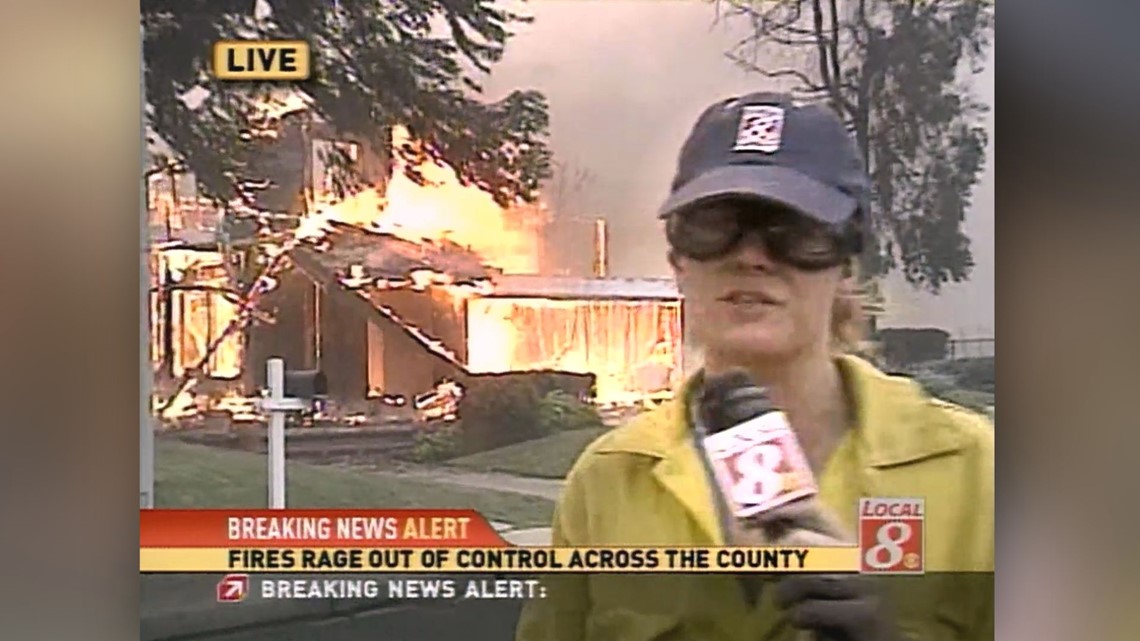
"Barbara Lee we just jumped on the other side of that house that we have been showing you live pictures of," said Heather during a live report in 2003.
"That day we went street by street trying to stay out of harm's way," said Heather. "Barbara Lee, we are again on Kings Pine Road," said Heather during a live report in 2003.
"The rooftops are falling in, the fire is hot, you can't even get close to these because the fire is so hot and when the wind starts blowing all of the embers come at you, so it's risky business being in there and it's very dramatic."
At one point, our CBS 8 crew tried to save a stranded dog. "Scott Hall is giving you a look at one of the homes lost on Fairbrook Road. I did see a little dog, a little Pug standing in between two burned-out homes and another photographer and I approached trying to get that little dog inside so we could get it inside a car to get it over to the Humane Society," said Heather during a live report in 2003.

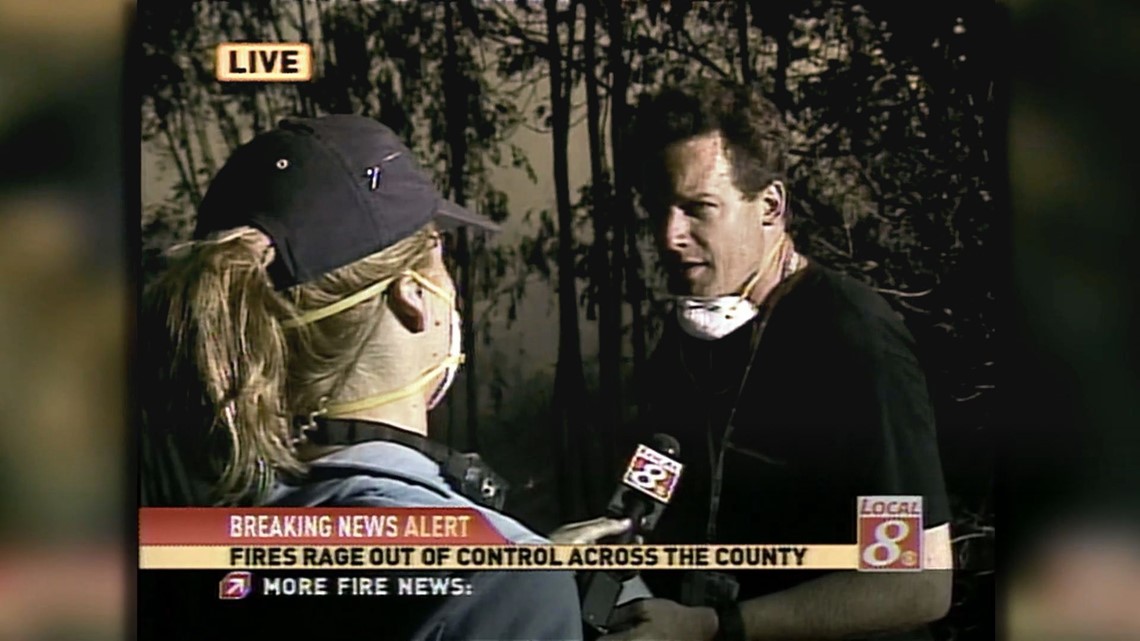
"When we were looking at that footage, I remember the dog, I remember the pug but it's so sad I do not remember if we were able to get the dog into a car," said Heather. A total of 14 civilians and one firefighter died in the Cedar Fire. Our live coverage continued into the night.
"Graham and Barbara Lee, we have now moved over, we are now along Fairbrooks Road to give you a different vantage point," said Heather during a live report in 2003. "I can give you one positive thing out here; we have noticed in the last hour the winds have calmed down so much."
"That day on the front lines watching the firefighters all day long, watching them hit the flames, watching them risk their lives, something clicked in me and I thought I want to be part of that community," said Heather who changed careers and went to nursing school. She became a registered nurse at Kaiser Permanente hoping to be part of the solution for San Diegans should disaster strike again.
"I'm so happy to look around and see all of these beautiful homes and the beautiful canyon areas it's just amazing to see how far this community has come," said Heather. "Life didn't stop, life changed but life didn't stop and there was a new beginning."
Many lessons were learned from the Cedar Fire. The massive firestorm that began nearly 20 years ago changed the way first responders fight fire in Southern California. Some of the changes include better radio communication between local, state and federal agencies and the use of more aircraft to fight fire at night.

